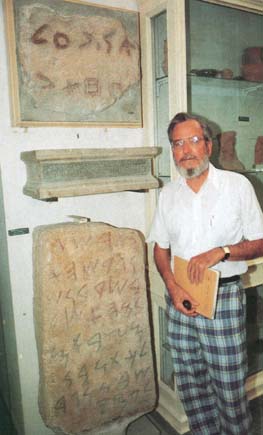Image Details

Courtesy Frank M. Cross
Inscribed with eight lines of Semitic letters in a Phoenician style, the Nora Stone probably once had two more lines of writing at the top, now broken off. Cross suspects that the first two lines told of a battle between the Phoenicians and local Sardinians, which took place “at Tarshish,” the beginning of the surviving inscription. Derived from a Semitic root meaning “to smelt,” Tarshish may have been a Phoenician mining town in Sardinia. The inscription goes on to say, “and he drove them out. / Among the Sardinians he is [now] at peace, / (and) his army is at peace: / Milkaton son of / Suhna (Shebna), general / of (king) Pummay.” Pummay, also written “Pu’myaton,” ruled in Tyre from 831 to 785 B.C., which helps Cross to date this memorialized conflict to 825 B.C.
